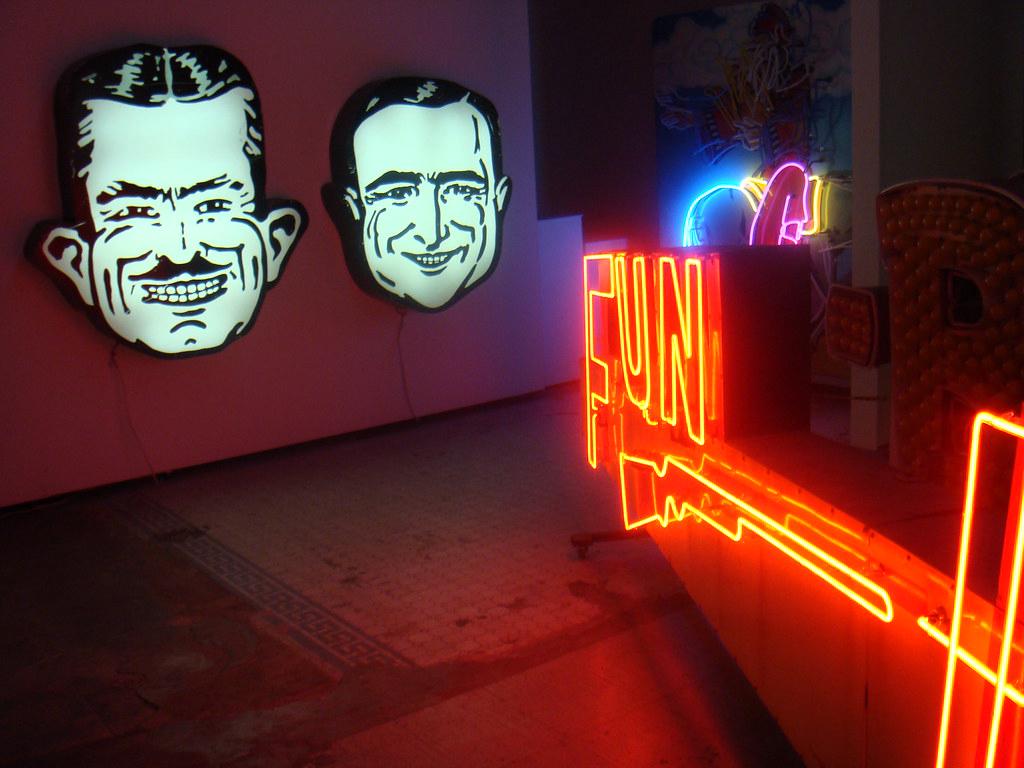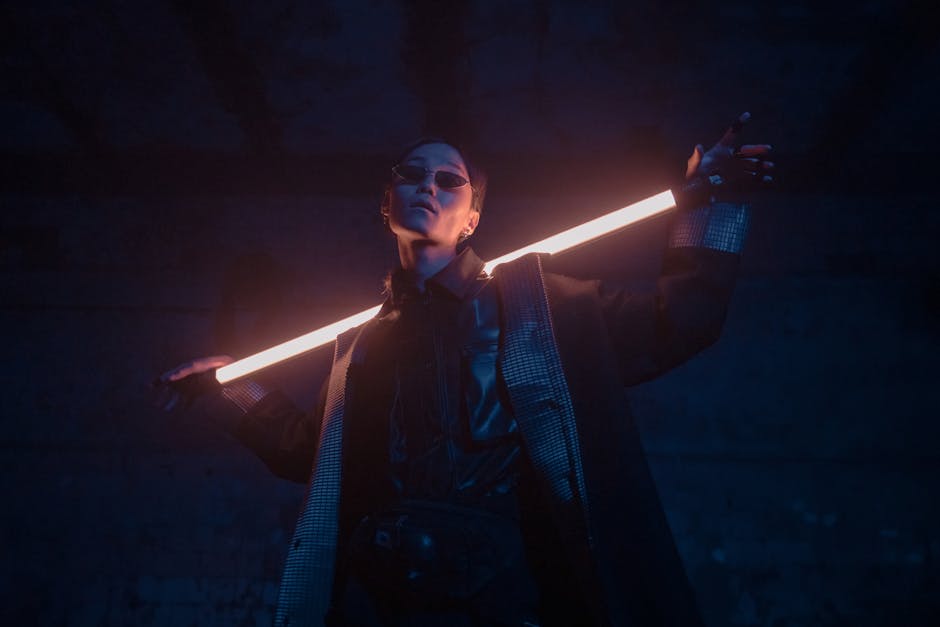History of Neon Colors in Art
The discovery of neon colors originated from the late 18th century when Henry Cavendish first came across the mysterious inert gas known as "Neon." Scientists found that noble gases like argon and helium would shine in varied light spectra, giving birth to captivating nightscapes. This luminescence soon made its way into popular culture and art through vibrant signage on city streets.
In postmodern art, neon colors found a robust platform as they challenged norms and invited interpretation. Artists like Dan Flavin pushed the boundaries of minimalist art with his use of fluorescent lights mounted geometrically. Such creations explored the interplay between light and space, redefining how art is perceived.
The rise of Pop Art also witnessed the integration of neon in diverse ways. Figures like Martial Raysse leveraged neon's attention-grabbing capabilities to add a touch of irony to his paintings, often commenting on consumerism and blending pop culture with art history.
Tracey Emin carved a unique niche by bending neon colors into handwritten-like words, marrying text and form. Her personalized neon artworks became symbolic of intimate revelations, speaking to love, vulnerability, and societal commentary.
Robert Montgomery crafted installations that wielded light to poetically critique social concerns and provoke reflection. With a flair for combining visual and verbal art, Montgomery highlighted ecological and philosophical themes.
In a broader context, neon colors have become a pivotal expression within postmodern art by refusing traditional artistic limitations. They enable artworks to glow with spectacle, challenging viewers to interact with both the physicality of light and the intangible nature of contemporary themes.
Neon Colors and Postmodern Aesthetics
The vibrant explosion of neon colors in postmodern art serves as an alluring yet subversive exploration of contemporary aesthetics. These kaleidoscopic hues captivate viewers with their dazzling glow and challenge the conventions of traditional art by fostering dynamic, interactive experiences. The postmodern era, characterized by questioning established norms and embracing multiplicity, found in neon a perfect medium to embody its themes of ambiguity and provocation.
Neon colors, with their inherent capacity to stand out, beckon audiences into a space where art transcends its traditional boundaries. They act as both the medium and the message, inviting questions about the nature of reality and perception. As audiences explore these radiant artworks, they are encouraged to interpret and re-interpret meanings, aligning with postmodernist philosophies that prioritize the viewer's perspective.
The aesthetic appeal of neon in postmodern art lies in its ability to merge high and low culture, blending the kitsch of neon signs with profound artistic statements. This democratization of art forms echoes the broader postmodern critique against elitism in the art world. The physical properties of neon serve as a canvas upon which larger social and philosophical ideas are projected, allowing for a multiplicity of interpretations.
Often associated with urban environments and commercial advertising, neon conveys messages of consumerism and modernity. In the hands of postmodern artists, however, these colors transcend their origins to become symbols of introspection and societal critique. The sharp, intense luminosity of neon can symbolize both the allure of modern life and its accompanying existential dilemmas, compelling viewers to explore the duality of beauty and banality in contemporary society.
Artists adept at wielding neon as a postmodern tool offer both a celebration and a critique of its glow. By leveraging neon's capacity to create stark contrasts and fluid stories, they invite empathetic connections and simultaneously provoke deeper reflection on themes like identity, transience, and the intersection of technology and humanity.

Notable Postmodern Artists Using Neon
Notable postmodern artists have integrated neon colors into their work, each utilizing the medium to reflect their unique perspective and examine profound thematic explorations. Dan Flavin stands tall as a pioneer of incorporating neon lights into minimalist art. Flavin's approach revolved around using commercially available fluorescent tubes to create simple yet grandiose installations that played with the concept of space and light. Works such as his "Icon" series transformed bare rooms into immersive environments, where the light itself became a dynamic participant in the art.
Martial Raysse utilized neon in a way that embraced both his pop art affinities and his critique of contemporary consumer culture. His works like "Nissa Bella," where neon enhances traditional canvases with striking, glowing lines, offered a juxtaposition of classical and modern elements.
Tracey Emin redefined how personal stories could be expressed through neon, using its vivid glow to transform words into profound visual expressions. Her piece "I Listen to the Ocean and All I Hear is You" captures the ephemeral intimacy of emotion through its radiant text.
Robert Montgomery's installations leverage neon to craft messages that blend visual and verbal commentary. By placing poetic texts amidst urban settings, he uses neon's arresting quality to engage passersby in moments of contemplation, prompting them to pause and reflect on broader philosophical or ecological themes.
Leila Pazooki employs neon vividly in her works to address socio-political issues, particularly focusing on themes relating to identity and culture. By crafting installations that juxtapose bright, playful neon words or symbols against dark themes of struggle or injustice, Pazooki's art challenges conventional views and urges a reconsideration of cultural perspectives.
These artists exemplify the kaleidoscopic capabilities of neon in postmodern art, each using its vibrant glow for deeper communication. Through their work, neon transcends its commercial origins, emerging as a multifaceted beacon that enriches the intersection of art, culture, and ideology.
Neon Colors in Contemporary Art Installations
The vibrant allure of neon colors continues to thread its way through contemporary art installations, where artists deftly harness its luminous qualities to craft immersive environments that captivate and engage audiences. In contemporary installations, neon's vivid hues do more than merely decorate; they envelop viewers, transforming spaces into dynamic areas that pulse with energy and elicit introspective responses.
Yayoi Kusama's installations often employ neon to envelop visitors in otherworldly realms of polka dots and infinite reflections. Her "Infinity Mirrors" environments submerge viewers in a kaleidoscope of neon-lit dots, creating an illusion of endless space. By employing neon, Kusama constructs a vivid story where the boundaries of the self and universe blur, inviting participants to lose themselves in a meditative exploration of infinity and transcendence.
James Turrell and Olafur Eliasson explore the interplay of light, color, and space to create transformative experiences. Turrell's "Light Reignfall" utilizes neon to manipulate perceptions of space, guiding visitors through a journey of changing light and shadows that alter their spatial awareness. Eliasson's "Room for One Colour" utilizes monochromatic neon lighting to reduce viewers' perception of color, highlighting the relativity of perception itself.
Ivan Navarro utilizes mirrors and neon to create illusions of infinite tunnels. His installations are a visual play on perception, using neon's optical effects to challenge viewers' understanding of space and reality. By visually plunging participants into what seems like endless chasms of light, Navarro's work exemplifies how neon can be employed as a sensory experience that manipulates space.
Lee Yongbaek's installation "My Little Paradise" examines themes of globalization and consumer culture by utilizing neon to create a simulated paradise. Neon signs, often associated with consumerism, are juxtaposed against tropical imagery to critique cultural commodification, creating a space where viewers are both seduced and prompted to question the artificiality of paradise.
Contemporary uses of neon extend beyond individual installations—immersive festivals and events, such as the annual Festival of Lights in Berlin, leverage neon to transform entire urban environments. Cast in neon hues, iconic landmarks and public spaces metamorphose into new landscapes, encouraging mass public engagement and interaction with the city's architectural and historical context.
Cultural Impact of Neon in Art
The cultural impact of neon colors in art is both profound and multifaceted, weaving itself into fashion, design, and popular culture. Neon colors have transcended their initial role as a mere artistic medium, becoming emblematic of modernity and acts of rebellion.
Fashion has seen cycles of neon's resurrection, most notably during the acid-hued explosion of the 1980s and the Y2K revival. Neon's appeal in fashion lies in its audaciousness—it promises an assertive style statement that defies the norms of conventional dressing. Designers continuously embrace neon as a tool to evoke futurism and boldness, whether through runway spectacles or streetwear staples.
In design and architecture, neon colors have illuminated urban landscapes with their electric charm, reshaping cityscapes into vibrant canvases of light. From Times Square to the Las Vegas Strip, neon signage has transformed cities into nocturnal wonderlands. Beyond mere advertisement, neon signs narrate the stories of their locales, capturing the essence of urban life in a language as universal as their luminous glow.
Popular culture absorbs the sheen of neon, where its bright spirit finds resonance in films, music, and digital media. Neon lights often set the scene for dystopian futures in cinema, reflecting the complex interplay between hope and despair. Meanwhile, music videos and digital art employ neon colors to portray an almost hypersensory experience, connecting with audiences on a primal level.
Neon's cultural journey reflects a broader dialogue about the tension between tradition and change. It symbolizes a break from the past, urging a forward-thinking embrace of the new—whether that new is a technological future or a modern reevaluation of identity and society. Its pervasive glow speaks to a collective yearning for disruption, an invitation to challenge the monotony of the mundane.
Importantly, neon's cultural relevance extends beyond surface aesthetics, encompassing broader discussions around environmental consciousness and technological innovation. As conversations pivot to sustainability, the art and design communities leverage advancements in neon technology to balance visual daring with ecological responsibility, fostering greener practices in the production and consumption of neon lighting.

Neon colors have transcended their origins, becoming symbols of modernity and creative expression. They invite us to reconsider our perceptions, blending the vibrancy of light with the depth of artistic expression. As they continue to illuminate our cultural landscapes, neon hues remind us of the power of art to challenge, engage, and inspire.
- Cavendish H. Experiments on Air. Philosophical Transactions of the Royal Society of London. 1785;75:372-384.
- Flavin D. Some other comments… more pages from a spleenish journal. Artforum. 1967;5(4):20-25.
- Emin T. Love Is What You Want. London: Hayward Gallery Publishing; 2011.
- Montgomery R. Echoes of Voices in the High Towers. London: Mono.Kultur; 2012.
- Kusama Y. Infinity Net: The Autobiography of Yayoi Kusama. Chicago: University of Chicago Press; 2011.
- Turrell J. James Turrell: A Retrospective. Los Angeles: Los Angeles County Museum of Art; 2013.






















